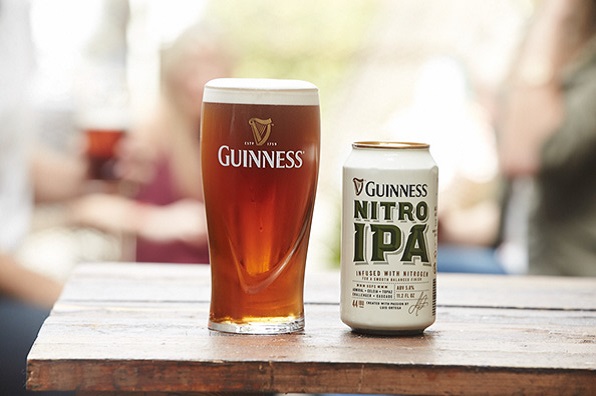When it comes to stouts, Guinness rules the world. Guinness Draught may not be the absolute best, but it’s pretty good, and it’s freaking everywhere. Guinness’ signature stout is especially beloved in its home nation of Ireland, where many pubs go through a keg every day. On the weekends, some popular bars finish a keg every hour.
After over 250 years of focusing on stout, it seems odd that Guinness would toss its jaunty Irish cap into the IPA ring. You might chalk this up to Guinness’ disappointing sales in recent years, or perhaps the new-found popularity of IPAs.
That answers the IPA question, but why go nitro? Well, nitro — the ingenious infusion of nitrogen into draft beer — gives Guinness the trademark velvety texture and head. It’s only natural for Guinness to extend the nitrogenated goodness to their IPA.

I was fortunate enough to taste the new Nitro IPA at Downtown Portland’s Swank Restaurant. As a beer-loving Portland native, I’ve had the pleasure of drinking gallons of crisp, balanced, and interesting IPAs from dozens of small craft breweries. Guinness, of course, is a foreign, stout beer juggernaut; on paper, their IPA is a tough sell for insufferable Portlandy beer snobs like myself.
Related: Stumptown Nitro Cold Brew: It’s Like Guinness, but Coffee
Indeed, I found the Nitro IPA to be enjoyable, but not mind-blowing. I could only detect a hint of hop aroma, while I’m used to IPAs that make my eyes water after a couple sniffs. Guinness’ signature creamy mouthfeel is definitely there, though I suspect it’s at the expense of the bubbly crispness that rocks most IPAs. As for taste, I was delighted by hints of caramel and citrus and a gentle bitterness on the back of the tongue. I drank two, if that tells you anything.
I can think of a couple explanations for the Nitro IPA’s failure to knock my socks off, beyond my personal bias for Northwest craft IPAs. Number one: The beer was in a can. Though the Nitro IPA contains the Guinness “widget” — an ingenious ping-pong-ball-like device that injects nitrogen into canned beer — nitro beer from a can just isn’t the same, even when poured into a glass.
Number two: The IPA is made en masse in Ireland. Though Guinness is well-loved, mass produced beers are often harder to enjoy than lovingly crafted beers from smaller breweries — particularly when the freshness is compromised by weeks of storage and shipping (which it must endure before reaching the Northwest U.S., at least).
The Nitro IPA cans should be available in supermarkets everywhere sometime over the next week. I was told that kegs will find their way stateside several weeks after that. If you happen to see the Nitro IPA on the shelves or in bars, I’d say go for it. You’ll still have a decent beer-drinking experience.
In conclusion, the Nitro IPA is a fine beer that fits elegantly into the Guinness family. People who typically steer clear of IPAs will find the Nitro IPA absolutely drinkable; however, steel-tongued IPA drinkers will likely be disappointed — at least until the kegged version becomes available.
ABV: 5.8%
44 IBUs



